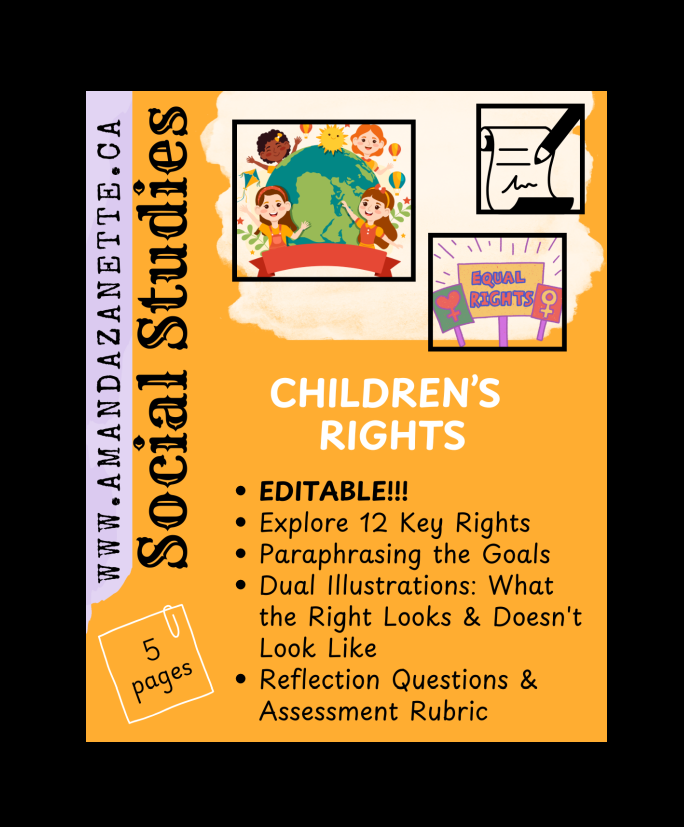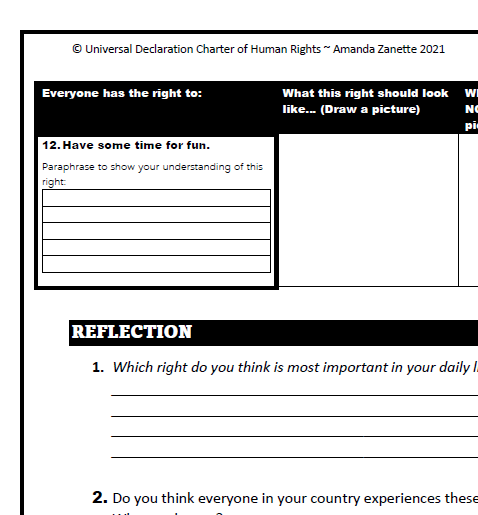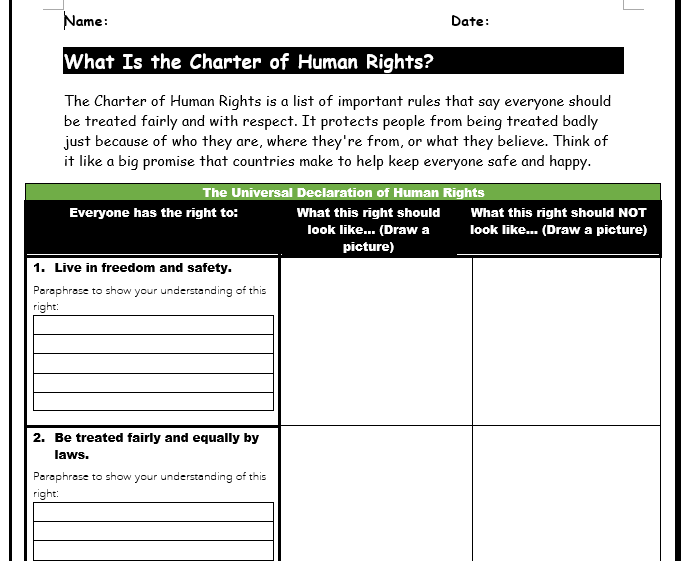 Image 1 of 3
Image 1 of 3

 Image 2 of 3
Image 2 of 3

 Image 3 of 3
Image 3 of 3




SS ~ 12 Universal Rights for Children to Explore
GRADE: 4-8 / TIME: About 1 Week (Dependent of whether you supplement each right with different books/videos or just speak to them)
Understanding the Charter of Human Rights Through Art and a Reflection Booklet [5 Pages]
In this interactive lesson, students explore 12 of the Charter of Human Rights in a meaningful and creative way. (Note that these 12 are not in the same order of the Charter. These rights were chosen because most students can connect more easily to them). Each right is presented in student-friendly language, and learners are asked to paraphrase the right in their own words to deepen understanding and promote personal connection. To extend their thinking, students then draw two images for each right: one that shows what the right should look like in practice, and one that shows what it should not look like.
Two reflective questions and a marking rubric have been included. This activity encourages critical thinking, empathy, and visual expression while helping students recognize the importance of human rights in everyday life.
Tip:Show video clips, picture books and have a 4 corner debate to help students have a deeper understanding of each concept. Speaking to a few of the rights at a time and tying in other resources can help students have a deeper understanding before paraphrasing and completing their drawings.
GRADE: 4-8 / TIME: About 1 Week (Dependent of whether you supplement each right with different books/videos or just speak to them)
Understanding the Charter of Human Rights Through Art and a Reflection Booklet [5 Pages]
In this interactive lesson, students explore 12 of the Charter of Human Rights in a meaningful and creative way. (Note that these 12 are not in the same order of the Charter. These rights were chosen because most students can connect more easily to them). Each right is presented in student-friendly language, and learners are asked to paraphrase the right in their own words to deepen understanding and promote personal connection. To extend their thinking, students then draw two images for each right: one that shows what the right should look like in practice, and one that shows what it should not look like.
Two reflective questions and a marking rubric have been included. This activity encourages critical thinking, empathy, and visual expression while helping students recognize the importance of human rights in everyday life.
Tip:Show video clips, picture books and have a 4 corner debate to help students have a deeper understanding of each concept. Speaking to a few of the rights at a time and tying in other resources can help students have a deeper understanding before paraphrasing and completing their drawings.

